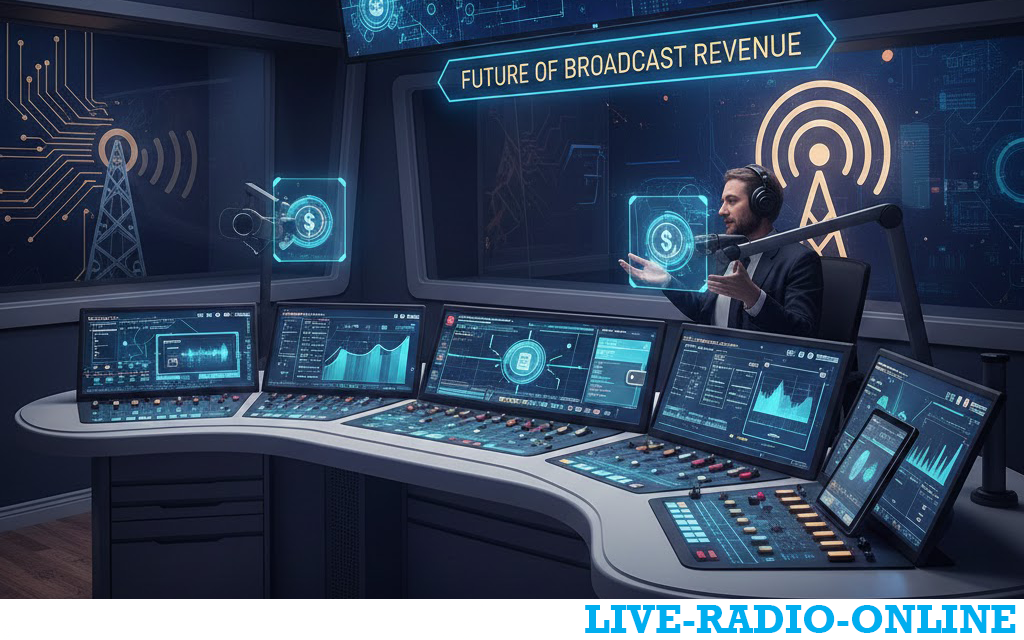
This is a fascinating and highly relevant topic. The integration of micropayments and tokenization represents a potential paradigm shift for the radio industry, moving it from a purely broadcast/ad-driven model to a more interactive, community-focused, and direct-to-listener economy.
Let's break down how these concepts could be applied to radio stations.
The Core Concepts
-
Micropayments: These are very small financial transactions, often too small for traditional credit card processing (which has high fixed fees). They enable listeners to pay tiny amounts (e.g., $0.10, $0.25) for specific actions.
-
Tokenization: This involves creating a unique digital asset (a "token") on a blockchain that represents value, ownership, or access rights. For a radio station, this could be a "Station Token" or "Artist Token" that listeners can earn, buy, and spend within the station's ecosystem.
How It Would Work: A Practical Scenario
Imagine a radio station, "WaveStream 101," launches its own token, the WAVE token.
1. Earning Tokens (Engagement & Loyalty):
Listeners don't just listen passively; they earn for their engagement.
-
Listening Time: Accumulate WAVE tokens for every 15 minutes spent listening to the live stream via the station's app.
-
Interaction: Earn tokens for completing actions like:
-
Voting in a "Top 5 at 5" countdown.
-
Answering a DJ's on-air poll.
-
Sharing a song on social media.
-
Writing a meaningful song review.
-
2. Spending Tokens (Micropayments for Influence & Access):
This is where the magic happens. Listeners spend their earned (or purchased) WAVE tokens for tangible benefits:
-
Song Requests: Pay 10 WAVE tokens to jump the queue and get your song played next.
-
Dedications: Pay 5 WAVE tokens to send a voice or text dedication to a friend.
-
Influence Programming: "The station is deciding between two new songs. Vote with your tokens! The song with the most tokens spent on it gets added to the rotation."
-
Access Exclusive Content: Pay 20 WAVE tokens to unlock an acoustic session or a full interview podcast with a featured artist.
-
Ad-Free Listening: Spend a larger amount of tokens for an hour of ad-free streaming.
-
Merchandise & Tickets: Use tokens for a discount on station merch or to enter a lottery for concert tickets.
Key Benefits for Radio Stations
-
Hyper-Engagement: Tokenization turns passive listening into an active, gamified experience. Listeners have a tangible stake in the station, fostering a deeper sense of community and loyalty.
-
New Revenue Streams: This creates a direct monetization channel beyond traditional advertising and sponsorships. Stations can sell token "starter packs" or take a small fee on peer-to-peer token transactions.
-
Valuable Data & Insights: The station gains incredibly detailed data on listener preferences. They don't just know what song you skipped; they know what you're willing to pay for.
-
Competitive Advantage: This modernizes the radio experience, making it relevant to younger, digitally-native audiences who are familiar with concepts like crypto and digital rewards.
-
Direct Artist Support: Stations can create "Artist Tokens" for local bands. When a listener uses tokens to request that artist's song, a portion is automatically sent to the artist, creating a new, transparent royalty stream.
Potential Models for Implementation
| Model | Description | Example |
|---|---|---|
| Loyalty & Engagement Model | Focuses on earning tokens through listening and light interaction, redeemable for small perks. Low barrier to entry. | "Earn 'Rock Points' for sharing songs, spend them to get your name on the 'Super Fan' wall." |
| Premium Influence Model | Listeners can purchase token packs to gain greater influence over programming and access exclusive content. | "Buy 100 'Station Coins' for $5 to vote for the 'Album of the Month' or unlock the artist interview." |
| Full Digital Economy Model | A comprehensive ecosystem with a station token that can be traded, used for significant purchases, and even support artists directly. | "Use WAVE tokens to buy digital collectibles (NFTs) from artists, get VIP ticket access, and earn a share of governance votes." |
Challenges & Considerations
-
Technical Complexity: Implementing a blockchain-based system requires significant technical expertise and infrastructure.
-
User Onboarding: Making the process seamless and easy for a non-technical audience is crucial. Friction will kill adoption.
-
Regulatory Uncertainty: Tokens can fall under securities regulations depending on their structure. Legal counsel is essential.
-
Volatility: If using a public blockchain, the value of the token could be volatile. Many systems use "stablecoins" or non-tradable points to avoid this.
-
Industry Adoption: Rights management organizations (e.g., ASCAP, BMI) and music labels would need to be involved for artist payout models to work at scale.
Real-World Precedents
While not yet mainstream in traditional radio, the concepts are being tested:
-
Audius: A decentralized, blockchain-based music streaming service that rewards both listeners and artists with its native token.
-
Social Tokens & NFTs: Artists like Kings of Leon have released albums as NFTs, offering special perks to holders, a concept easily adaptable by radio stations for promotions.
Conclusion
Micropayments and tokenization offer radio stations a path from being a one-way broadcast medium to becoming a dynamic, interactive, and community-owned platform.
It shifts the relationship from "broadcaster-to-listener" to a "community-and-creator economy." Stations that embrace this early could build unprecedented loyalty, unlock new revenue, and secure their place in the future of digital audio entertainment. The transition won't be simple, but the potential reward is a more resilient, engaged, and profitable radio model.


